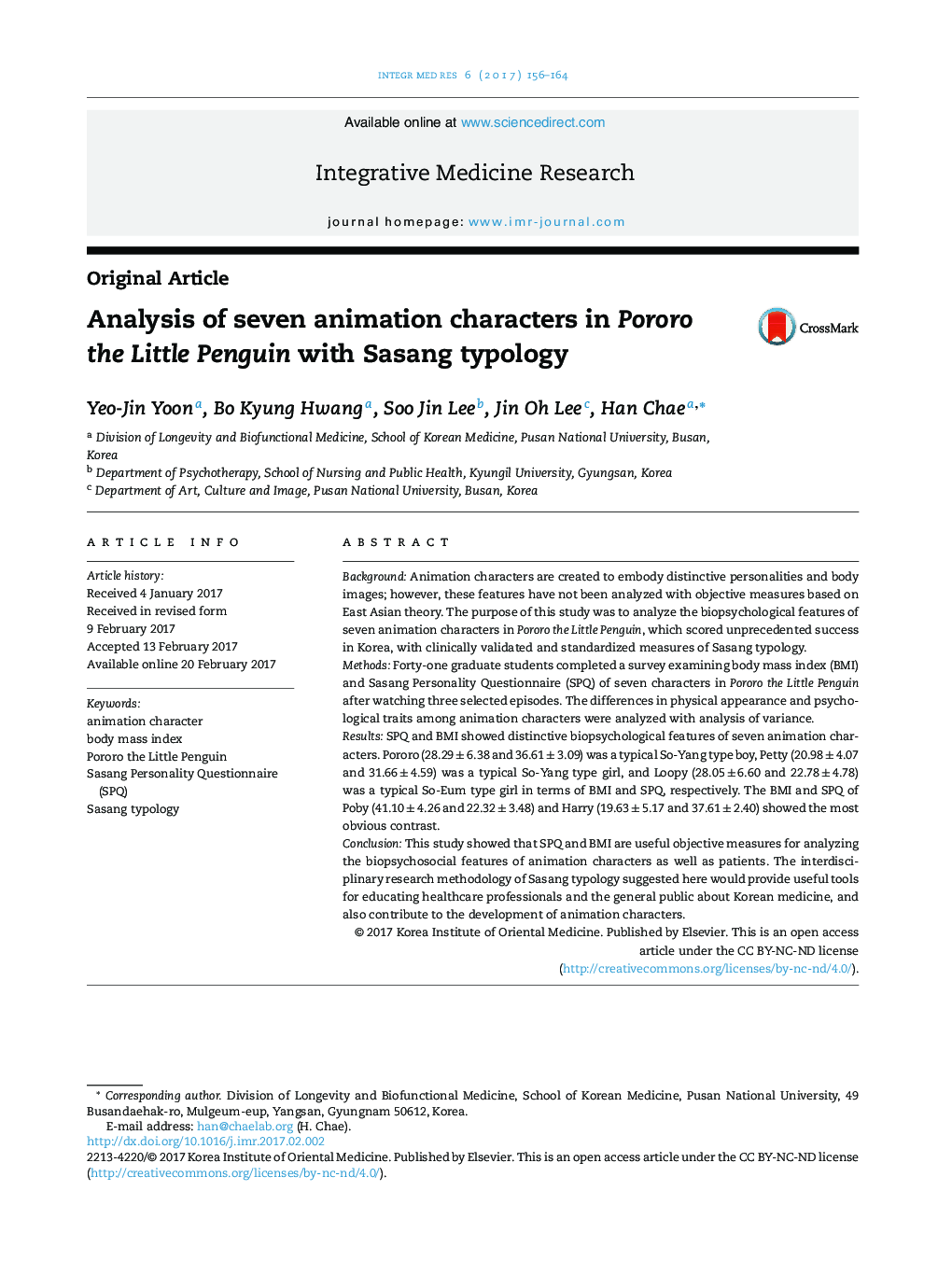| Article ID | Journal | Published Year | Pages | File Type |
|---|---|---|---|---|
| 5635102 | Integrative Medicine Research | 2017 | 9 Pages |
BackgroundAnimation characters are created to embody distinctive personalities and body images; however, these features have not been analyzed with objective measures based on East Asian theory. The purpose of this study was to analyze the biopsychological features of seven animation characters in Pororo the Little Penguin, which scored unprecedented success in Korea, with clinically validated and standardized measures of Sasang typology.MethodsForty-one graduate students completed a survey examining body mass index (BMI) and Sasang Personality Questionnaire (SPQ) of seven characters in Pororo the Little Penguin after watching three selected episodes. The differences in physical appearance and psychological traits among animation characters were analyzed with analysis of variance.ResultsSPQ and BMI showed distinctive biopsychological features of seven animation characters. Pororo (28.29 ± 6.38 and 36.61 ± 3.09) was a typical So-Yang type boy, Petty (20.98 ± 4.07 and 31.66 ± 4.59) was a typical So-Yang type girl, and Loopy (28.05 ± 6.60 and 22.78 ± 4.78) was a typical So-Eum type girl in terms of BMI and SPQ, respectively. The BMI and SPQ of Poby (41.10 ± 4.26 and 22.32 ± 3.48) and Harry (19.63 ± 5.17 and 37.61 ± 2.40) showed the most obvious contrast.ConclusionThis study showed that SPQ and BMI are useful objective measures for analyzing the biopsychosocial features of animation characters as well as patients. The interdisciplinary research methodology of Sasang typology suggested here would provide useful tools for educating healthcare professionals and the general public about Korean medicine, and also contribute to the development of animation characters.
